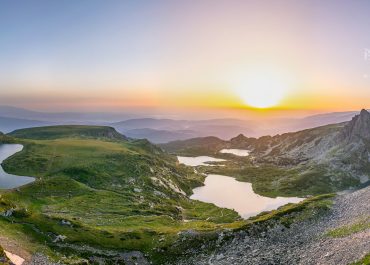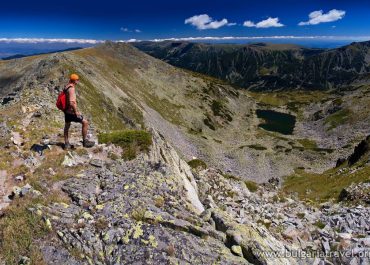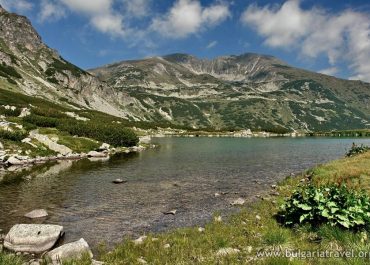
The Duhla Cave
The Duhla Cave (Wind’s Breath Cave) is the longest one in Bulgaria, with an overall length of 18 km. It is located in the southwestern part of the Vitosha Mountains near the village of Bosnek, in the administrative region of Pernik. It is a complex cave system, with six levels and many entrances. The name of the cave comes from the sound that the wind makes when it blows through it.
Seven underground streams flow through the cave and most likely are tributaries of the Strum River. They flow together and empty into a karst (limestone) reservoir, Gornata Cheshma (The Upper Well).
On the six cave levels, there are a great number of unbelievably beautiful galleries filled with limestone formations and secondary limestone shapes, with very narrow passages that at times make access a difficult struggle. The cave is particularly rich in secondary entities. To explore this cave, an experienced guide and prior training are required, since the cave’s labyrinthine nature makes the cave hazardous for those who enter it unprepared.
There are 22 animal species living in the cave, including 6 species of bat.
The cave was declared a natural landmark by Decree № 2810 on October 10, 1962. To prevent the destruction of the rare and fragile forms in the cave, the cave entrance is locked.
For more information, contact the Bulgarian Speleological Federation.
There are no personnel at the cave.
The cave may only be visited with an experienced guide and appropriate spelunking gear – helmets, lights, appropriate clothing, and rubberized boots. If visitors experience mishaps or get lost, they should immediately contact the mountain rescue service (+359) 2 963 20 00
Tourist Information Center – Sofia
Monday – Friday: 9:30 – 18:00
Sofia City, the underpass of Sofia University “St. Kliment Ohridski”
Tel:
+359 2 4918344
+359 2 4918345
E-mail: tourist@info-sofia.bg
Tourist Information Center – Largo
Monday – Friday 9:00 – 18:00
Metrostation Serdica 2
Tel: +359 2 49 49 315
E-mail: largo@info-sofia.bg
The Duhla Cave (Wind’s Breath Cave) is the longest one in Bulgaria, with an overall length of 18 km. It is located in the southwestern part of the Vitosha Mountains near the village of Bosnek, in the administrative region of Pernik. It is a complex cave system, with six levels and many entrances. The name of the cave comes from the sound that the wind makes when it blows through it.
Seven underground streams flow through the cave and most likely are tributaries of the Strum River. They flow together and empty into a karst (limestone) reservoir, Gornata Cheshma (The Upper Well).
On the six cave levels, there are a great number of unbelievably beautiful galleries filled with limestone formations and secondary limestone shapes, with very narrow passages that at times make access a difficult struggle. The cave is particularly rich in secondary entities. To explore this cave, an experienced guide and prior training are required, since the cave’s labyrinthine nature makes the cave hazardous for those who enter it unprepared.
There are 22 animal species living in the cave, including 6 species of bat.
The cave was declared a natural landmark by Decree № 2810 on October 10, 1962. To prevent the destruction of the rare and fragile forms in the cave, the cave entrance is locked.
For more information, contact the Bulgarian Speleological Federation.
There are no personnel at the cave.
The cave may only be visited with an experienced guide and appropriate spelunking gear – helmets, lights, appropriate clothing, and rubberized boots. If visitors experience mishaps or get lost, they should immediately contact the mountain rescue service (+359) 2 963 20 00
Tourist Information Center – Sofia
Monday – Friday: 9:30 – 18:00
Sofia City, the underpass of Sofia University “St. Kliment Ohridski”
Tel:
+359 2 4918344
+359 2 4918345
E-mail: tourist@info-sofia.bg
Tourist Information Center – Largo
Monday – Friday 9:00 – 18:00
Metrostation Serdica 2
Tel: +359 2 49 49 315
E-mail: largo@info-sofia.bg
Virtual map
Photos
© All images, advertising and video materials and/or other information published on this website are property of the Ministry of Tourism and are protected by the Law on Copyright and Related Rights, according to the Bulgarian laws to all applicable international and relevant acts of the European Union.





